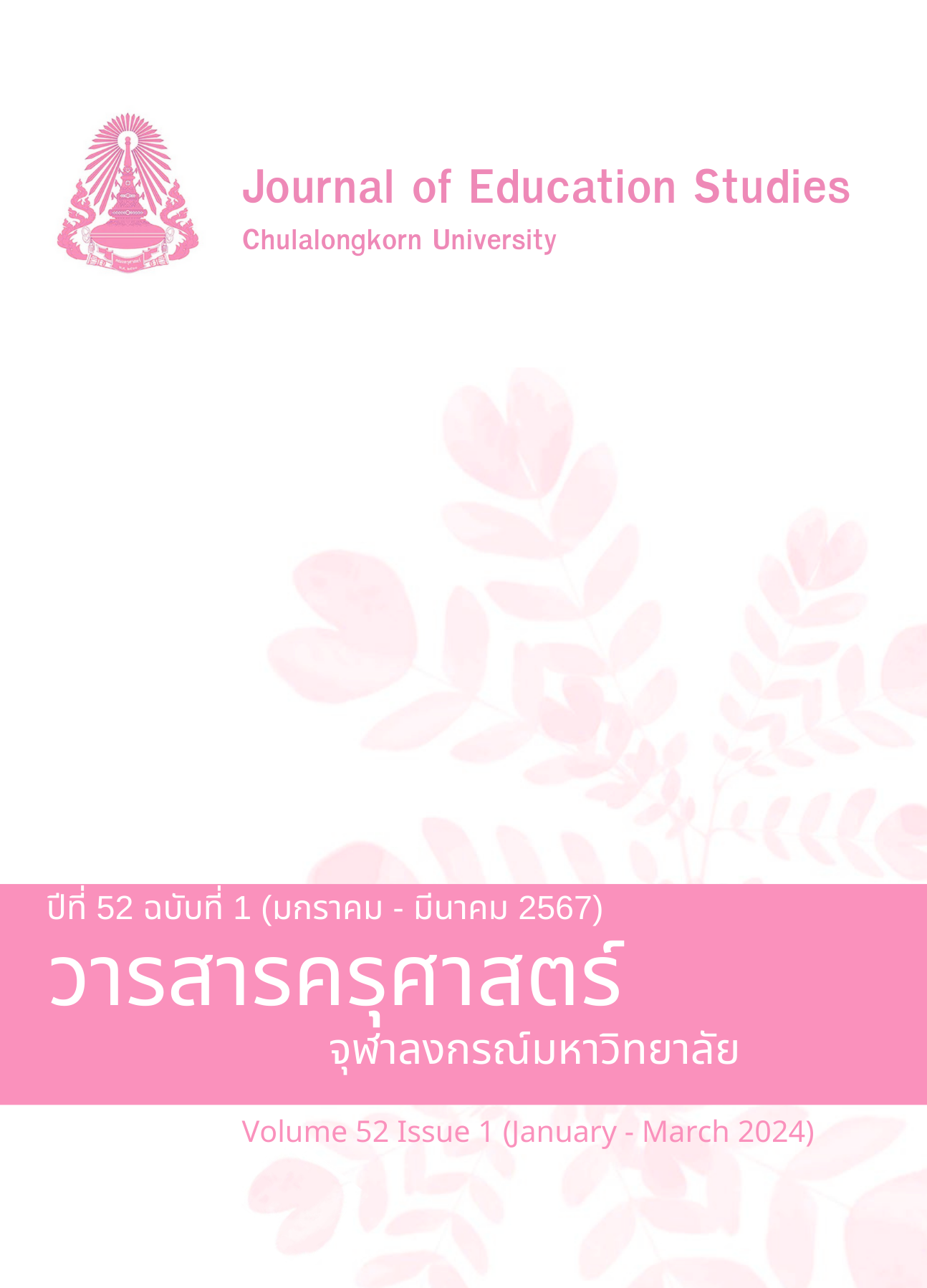The development of the Music Program under The Office of the Basic Education Commission (OBEC)
DOI:
https://doi.org/10.14456/educu.2024.4Keywords:
music program, music curriculum, special classroomAbstract
This research aims to study 1) the history and origin of the Music Program and 2) the curriculums and standard of the music classroom project operated by the Office of the Basic Education Commission (OBEC). The Music Program promote talent learners in music at secondary level. Qualitative research method has been used for this study. Emphasis is placed on studying documents and interview. The results showed that the project originated from the development of music teaching in the three southern border provinces in 2017. Later, the idea was expanded to other schools across the country. Currently, there are 19 schools in the program. (Thai music program and Western music program). The school’s curriculum is developed based on their readiness and strength according to the framework of the Basic Education Core Curriculum, 2008. The structure of the program consists of 1) Music Skills 2) Music Theory and 3) Music Technology. The student standards in the music program consists of: 1) Music Theory, 2) Major Instrument practice, and 3) Music Performance. The curriculum references leaners’ learning outcome with the 2001 Thai Music Professional Standard of in Thai music program and The Associated Board of the Royal Schools of Music (ABRSM) in Western music program.
References
ภาษาไทย
กระทรวงศึกษาธิการ. (2542). พระราชบัญญัติการศึกษาแห่งชาติ พุทธศักราช 2542. สยามสปอรต์ซินดิเคท.
กระทรวงศึกษาธิการ. (2561). หลักสูตรแกนกลางสถานศึกษาขั้นพื้นฐาน พุทธศักราช 2551 (ฉบับปรับปรุง 2560). กระทรวงศึกษาธิการ.
จารึก ศุภพงศ์. (2546). การศึกษาการดำเนินการพัฒนาหลักสูตรดนตรี สำหรับนักเรียนผู้มีความสามารถพิเศษ
ทางด้านดนตรี : กรณีศึกษาโรงเรียนมัธยมสังคีตวิทยา กรุงเทพมหานคร [วิทยานิพนธ์สาขาวิชานิเทศการศึกษาและพัฒนาหลักสูตร]. จุฬาลงกรณ์มหาวิทยาลัย.
สิริรักษ์ ชูสวัสดิ์. (4 เมษายน 2565). แนวคิดการออกแบบโครงการห้องเรียนดนตรี. (ศราวุธ ผกาแดง, ผู้สัมภาษณ์)
สำนักงานคณะกรรมการการศึกษาขั้นพื้นฐาน. (2560, 30 พฤศจิกายน). ปฏิบัติการแนวทางการบริหารจัดการ
โครงการห้องเรียนดนตรี. https://www.obec.go.th/archives/88004.
สำนักงานนโยบายและแผนการศึกษาขั้นพื้นฐาน. (2565). แนวทางการขอเปิดห้องเรียนพิเศษในสถานศึกษา
ขั้นพื้นฐาน โดยสำนักงานเขตพื้นที่การศึกษา พ.ศ.2565. กลุ่มวิจัยและพัฒนานโยบาย.
สำนักวิชาการและมาตรฐานการศึกษา. (2553). แนวทางการบริหารจัดการหลักสูตรตามหลักสูตรแกนกลาง
การศึกษาขั้นพื้นฐาน พุทธศักราช 2551. โรงพิมพ์ชุมนุมสหกรณ์การเกษตรแห่งประเทศไทย.
สำนักวิชาการและมาตรฐานการศึกษา. (2565ก). คู่มือการจัดการเรียนการสอนโครงการห้องเรียนดนตรี.
กลุ่มพัฒนาการศึกษาสำหรับผู้มีความสามารถพิเศษ.
สำนักวิชาการและมาตรฐานการศึกษา. (2565ข). รายงานผลการดำเนินงานโครงการห้องเรียนดนตรี
ปีงบประมาณ 2565. กลุ่มพัฒนาการศึกษาสำหรับผู้มีความสามารถพิเศษ.
สำนักวิชาการและมาตรฐานการศึกษา. (2565ค). สรุปผลการดำเนินงานโครงการห้องเรียนดนตรีปีงบประมาณ
กลุ่มพัฒนาการศึกษาสำหรับผู้มีความสามารถพิเศษ.
เอกพงศ์ สิ้นเคราะห์. (2565). การพัฒนาหลักสูตรแผนการเรียนศิลป์-ดนตรี สำหรับนักเรียนชั้นมัธยมศึกษา
ตอนปลายตามแนวคิดการจัดหลักสูตรฐานสมรรถนะ : กรณีศึกษาโรงเรียนกรุงเทพคริสเตียนวิทยาลัย [วิทยานิพนธ์สาขาวิชาสังคีตวิจัยและพัฒนา]. มหาวิทยาลัยศิลปากร.
ภาษาอังกฤษ
Wai - Chung Ho. (2014). Music education curriculum and social change: a study of popular
music in secondary schools in Beijing, China. Music Education Research, 16: 3, 267 –
, DOI: 10.1080/14613808.2014.910182.
Mohd Hassan Abdullah. (2017). Music education in Malaysia public school: Implementation
issues and challenges. Journal Pendidikan Bitara Upsi, 1: 1, 29 – 43.
Downloads
Published
How to Cite
Issue
Section
License

This work is licensed under a Creative Commons Attribution-NonCommercial-NoDerivatives 4.0 International License.




